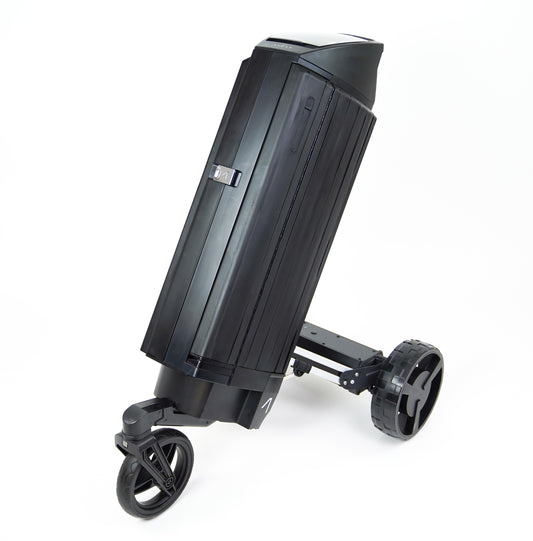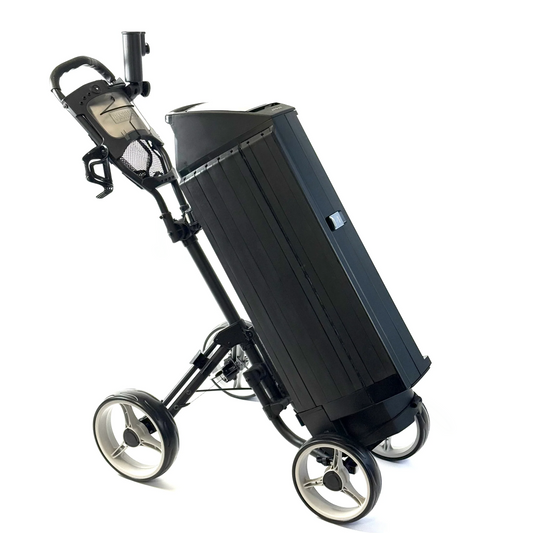The Ultimate Guide to Increase Your Driving Distance in Golf (2025)

Every golfer, from weekend players to aspiring professionals, shares the same dream: to increase their driving distance in golf and consistently send the ball soaring farther down the fairway. Few things feel more satisfying than outdriving your buddies or reaching a par 5 in two. It’s not just about bragging rights; it’s about giving yourself better chances to score and lowering your handicap.
But here’s the truth: most golfers chase distance the wrong way. They swing harder, buy new clubs, or try to “muscle” the ball. While those can help in small ways, real improvement requires a smarter approach one that combines swing mechanics, physical fitness, flexibility, drills, and properly fitted equipment.
In this complete guide, you’ll learn everything you need to know to increase your driving distance in golf step by step, and in ways that actually work. By the end, you’ll have a blueprint you can follow immediately, whether you’re a 20-handicapper or a seasoned player looking for extra yards.
Why Distance Matters in Golf
Some golfers insist that accuracy matters more than distance, but modern golf tells a different story. Data from the USGA and ShotLink statistics on the PGA Tour prove that players who hit it longer consistently score better.
Think about it:
* A longer drive means shorter approach shots. Instead of hitting a 5-iron into a green, you’re swinging a pitching wedge. That alone can cut strokes.
* Confidence grows when you know you can carry hazards, clear fairway bunkers, or reach par 5s in two.
* Even if you aren’t deadly accurate, being 20 yards closer usually outweighs the risk of slight dispersion.
The modern game rewards power combined with control. If you want to compete in 2025, whether at your local club or in tournaments, you need to increase your driving distance in golf.
The Mistakes That Cost You Distance
Before you learn how to increase your driving distance in golf, you should understand what might be holding you back.
1. Relying too much on your arms
Swinging with just your arms creates weak contact and inconsistent results. Distance comes from the whole body, not just the hands.
2. Poor ball position
Placing the ball too far back leads to hitting down on the ball, creating excess spin and a weak trajectory.
3. Lack of flexibility
A tight upper back, stiff hips, or weak core limits your ability to rotate fully. Without rotation, there’s no stored power.
4. Incorrect tempo
Many golfers think swinging faster equals more distance. In reality, rushing your swing destroys sequencing and power transfer.
5. Outdated or ill-fitted equipment
A driver that doesn’t match your swing speed or launch conditions can cost you 20–30 yards.
Swing Adjustments to Increase Your Driving Distance in Golf
You don’t need to reinvent your swing overnight. Small adjustments often create big results.
Ball Position and Tee Height
* Position the ball just inside your lead heel. This ensures you hit the ball on the upswing, not down on it.
* Tee the ball so at least half of it is above the top line of your driver. A higher tee encourages an upward strike, leading to lower spin and higher launch.
Use Your Lower Body
Power comes from the ground up. Focus on pushing against the turf with your trail leg in the backswing, then driving into your lead foot as you unwind. This sequence creates momentum you can’t get from arm strength alone.
Smooth Tempo, Explosive Finish
Instead of jerking the club back and rushing, keep your backswing smooth and gather energy. Then unleash it through the ball with full extension. A simple mental cue: “slow back, fast through.”
The Kinetic Chain
Your body should fire in sequence feet, hips, torso, shoulders, arms, and finally the club. When the order is right, power flows naturally. When it’s off, power leaks away.
Power Drills to Help You Increase Your Driving Distance in Golf
Drills create muscle memory and help you feel the correct movements. Try these regularly:
Rest, Rotate, Reach Drill
Hold the driver across your shoulders. Rotate your body until your back faces the target. Then extend your lead arm straight ahead. You’ll feel your core engaged and your shoulders coiled. This teaches you how to build torque.
Flower Drill
Set a small object (leaf, tee, or daisy) one inch in front of the ball. Your goal is to strike the ball and brush the object after impact. This drill teaches extension through the strike zone, keeping the clubhead accelerating longer.
Resistance Band Swings
Attach a resistance band to a post, grip it like a club, and swing against the tension. This builds explosive strength in the exact muscles you use during your swing.
Step-Through Drill
Set up normally. As you swing down, step forward with your trail foot after impact, like a baseball player finishing a throw. This encourages full weight transfer and prevents hanging back.
Golf Fitness: The Engine Behind Distance

If the swing is the delivery system, the body is the engine. You can’t increase your driving distance in golf without conditioning your body to handle it.
Core Strength
A strong core provides stability and rotational speed. Without it, your swing collapses.
* Russian Twists with Medicine Ball
* Side Plank with Rotation
* Cable Woodchops
Lower Body Power
Your legs and glutes are the foundation of distance. They allow you to push off the ground and generate torque.
* Squats (bodyweight or barbell)
* Lunges and Split Squats
* Glute Bridges or Hip Thrusts
Upper Body Support
While the lower body and core drive power, the upper body transfers it. Strong shoulders and lats keep your swing stable.
* Push-ups and Bench Press
* Pull-ups or Lat Pulldowns
* Shoulder Raises with Dumbbells
Mobility and Flexibility for a Bigger Turn
Most amateurs overlook this, but it’s often the fastest way to increase your driving distance in golf. Flexibility allows you to rotate fully, store energy, and release it.
Daily mobility moves:
* Foam Roller Snow Angels → open shoulders and improve posture.
* Thoracic Spine Rotations → increase upper back mobility.
* Hip Openers → give your lower body more freedom to rotate.
Consider yoga or Pilates once a week. Many pros rely on these practices for balance, mobility, and injury prevention.
Speed Training: How to Swing Faster Safely
Speed equals distance. The faster your clubhead at impact, the farther the ball travels. But speed must be trained like any other skill.
Overspeed Training
Use lighter training clubs or speed sticks to swing faster than normal. This teaches your nervous system to handle higher speeds.
The Swish Drill
Swing your driver in the air and focus on making the “whoosh” sound as loud and late (near impact) as possible. This reinforces acceleration at the right time.
Explosive Exercises
* Box Jumps
* Medicine Ball Slams
* Rotational Throws Against a Wall
These exercises develop fast-twitch muscle fibers, the key to explosive golf swings.
Equipment: The Right Driver for Maximum Distance
Even if you perfect your swing and fitness, the wrong driver can hold you back.
Loft
Higher lofts (10–12 degrees) often help average golfers increase carry distance by creating better launch conditions.
Shaft
The shaft’s flex, weight, and length must match your swing speed. Too stiff, and you lose height; too flexible, and you lose control.
Custom Fitting
A launch monitor fitting session can reveal your ideal shaft, loft, and clubhead design. Many golfers instantly gain 15–20 yards after a professional fitting.
The Mental Game of Hitting It Farther
Confidence plays a big role in speed. If you’re tense, you’ll swing slower and tighter.
* Visualize: Before you swing, picture the ball flying long and straight.
* Focus on rhythm: Think about tempo instead of “don’t slice.”
* Commit fully: Deceleration kills distance. A committed swing, even if slightly offline, goes farther and often straighter.
A Weekly Plan to Increase Your Driving Distance in Golf
Here’s a simple but powerful routine you can adopt:
* Monday: Strength training (legs + core).
* Tuesday: Range session with drills.
* Wednesday: Mobility and yoga.
* Thursday: Speed training (overspeed swings + plyometrics).
* Friday: Strength training (upper body).
* Saturday: On-course practice with focus on drives.
* Sunday: Rest and recovery.
Consistency is what delivers results. Stick to this for three months and you’ll notice your drives flying farther than ever.
What Results to Expect
So how much can you gain if you commit?
* Swing mechanics adjustments: 5–10 yards.
* Fitness and flexibility improvements: 10–20 yards.
* Equipment fitting: 10–20 yards.
* Comprehensive program: 20–40 yards within 6 months.
Every golfer is different, but almost anyone can increase their driving distance in golf by combining these strategies.
Conclusion: It’s Time to Add Yards to Your Drives
If you want to increase your driving distance in golf, stop looking for quick fixes. Real improvement comes from a balanced approach: efficient swing mechanics, a body trained for power, targeted drills for speed, and equipment that matches your swing.
Golf is about consistency and progress, not perfection. Start with small adjustments, celebrate each extra yard you gain, and keep building. Soon, you’ll step onto the tee box with confidence, knowing you can outdrive your competition and set yourself up for lower scores.
The fairways are waiting. Grab your driver, apply these strategies, and watch your game reach new distances.







